Simulation Standard Technical Journal
A Journal for Process and Device Engineers
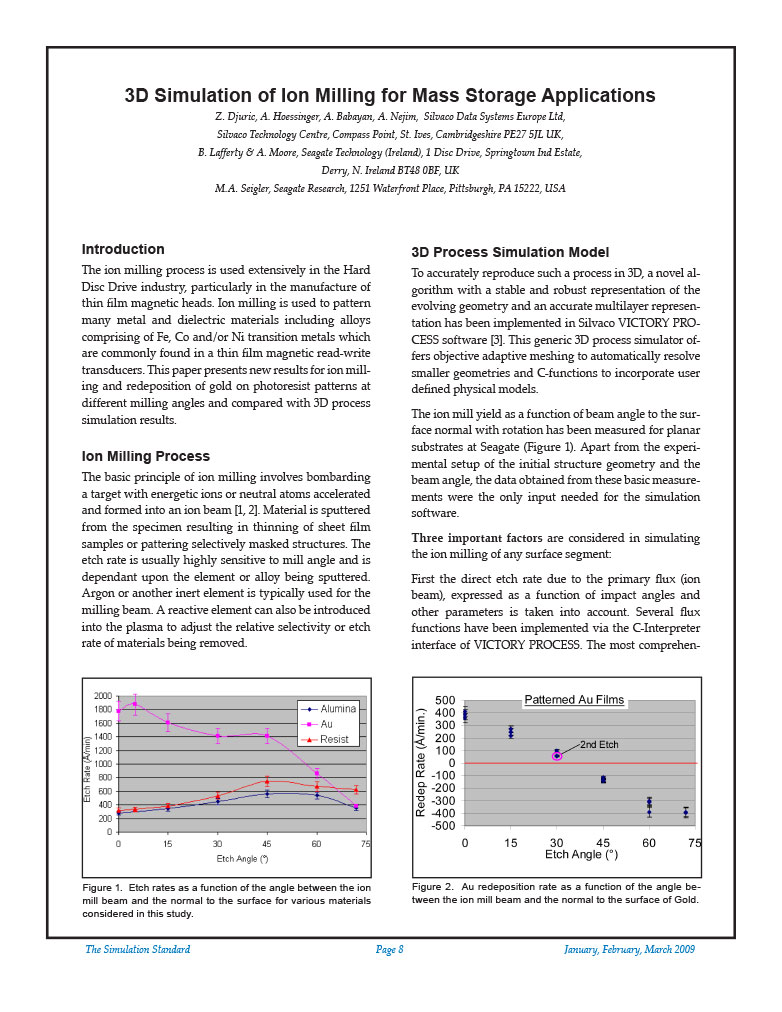
3D Simulation of Ion Milling for Mass Storage Applications
The ion milling process is used extensively in the Hard Disc Drive industry, particularly in the manufacture of thin film magnetic heads. Ion milling is used to pattern many metal and dielectric materials including alloys comprising of Fe, Co and/or Ni transition metals which are commonly found in a thin film magnetic read-write transducers. This paper presents new results for ion milling and redeposition of gold on photoresist patterns at different milling angles and compared with 3D process simulation results.
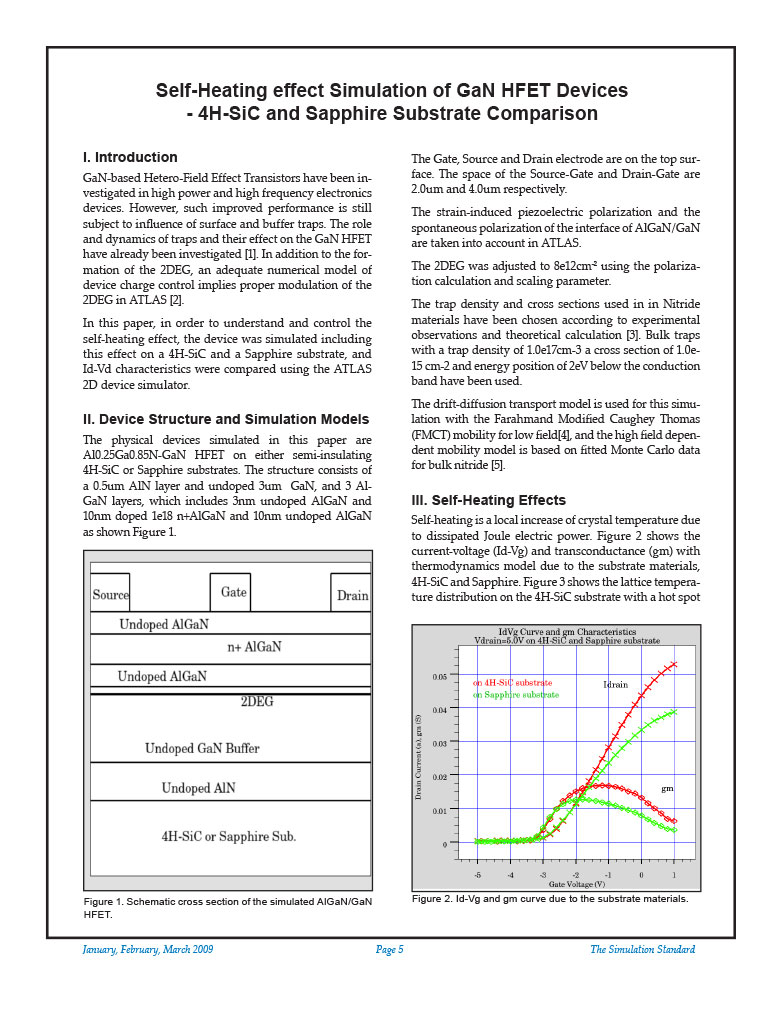
Self-Heating effect Simulation of GaN HFET Devices – 4H-SiC and Sapphire Substrate Comparison
GaN-based Hetero-Field Effect Transistors have been investigated in high power and high frequency electronics devices. However, such improved performance is still subject to influence of surface and buffer traps. The role and dynamics of traps and their effect on the GaN HFET have already been investigated [1]. In addition to the formation of the 2DEG, an adequate numerical model of device charge control implies proper modulation of the 2DEG in ATLAS [2].
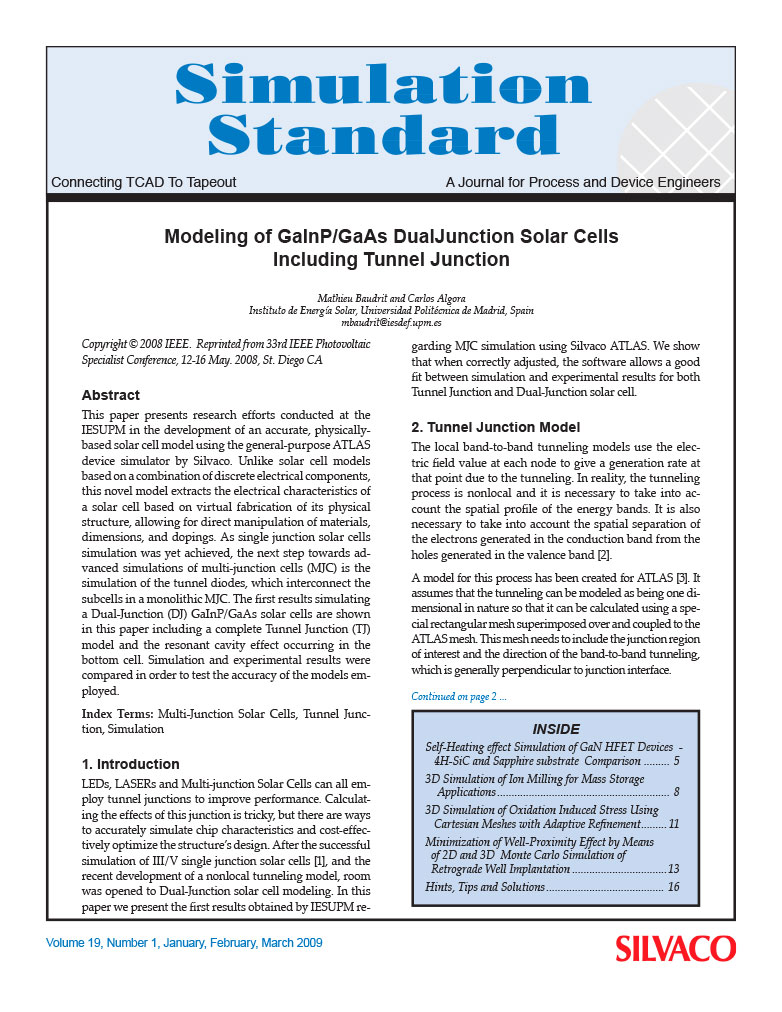
Modeling of GaInP/GaAs DualJunction Solar Cells Including Tunnel Junction
This paper presents research efforts conducted at the IESUPM in the development of an accurate, physically-based solar cell model using the general-purpose ATLAS device simulator by Silvaco. Unlike solar cell models based on a combination of discrete electrical components, this novel model extracts the electrical characteristics of a solar cell based on virtual fabrication of its physical structure, allowing for direct manipulation of materials, dimensions, and dopings. As single junction solar cells simulation was yet achieved, the next step towards advanced simulations of multi-junction cells (MJC) is the simulation of the tunnel diodes, which interconnect the subcells in a monolithic MJC. The first results simulating a Dual-Junction (DJ) GaInP/GaAs solar cells are shown in this paper including a complete Tunnel Junction (TJ) model and the resonant cavity effect occurring in the bottom cell. Simulation and experimental results were compared in order to test the accuracy of the models employed.
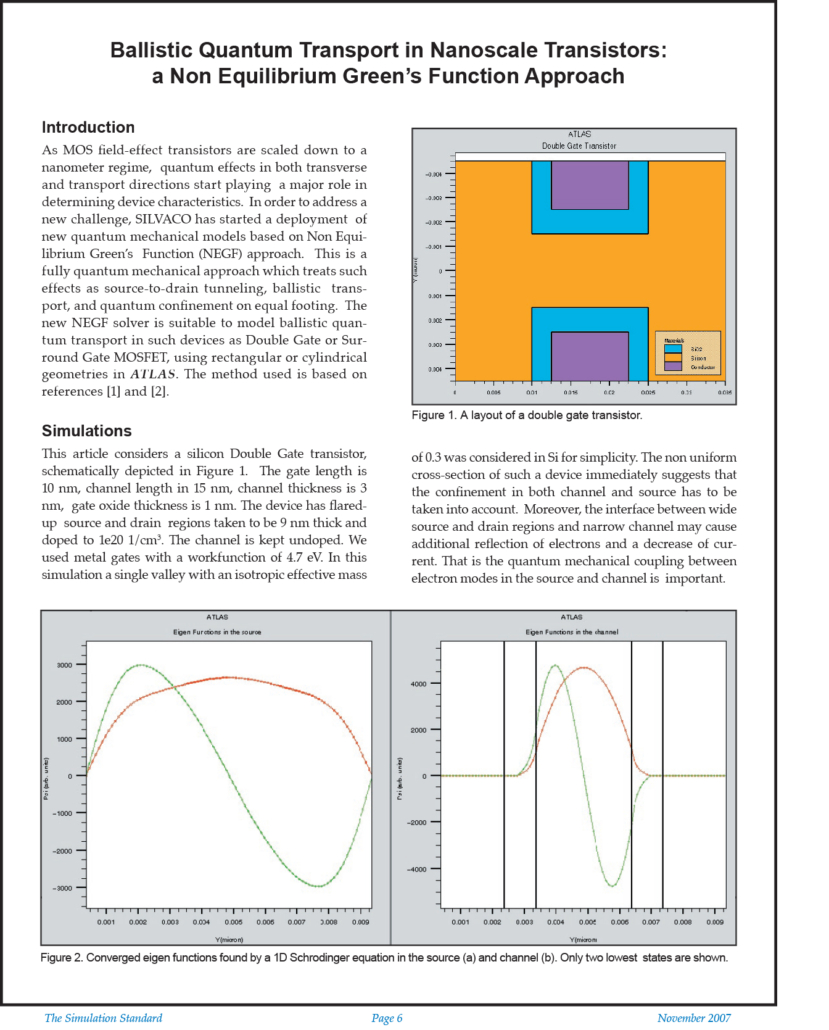
Ballistic Quantum Transport in Nanoscale Transistors: a Non Equilibrium Green’s Function Approach
Introduction
As MOS field-effect transistors are scaled down to a nanometer regime, quantum effects in both transverse and transport directions start playing a major role in determining device characteristics. In order to address a new challenge, SILVACO has started a deployment of new quantum mechanical models based on Non Equilibrium Green’s Function (NEGF) approach. This is a fully quantum mechanical approach which treats such effects as source-to-drain tunneling, ballistic transport, and quantum confinement on equal footing. The new NEGF solver is suitable to model ballistic quantum transport in such devices as Double Gate or Surround Gate MOSFET, using rectangular or cylindrical geometries in ATLAS. The method used is based on references [1] and [2].
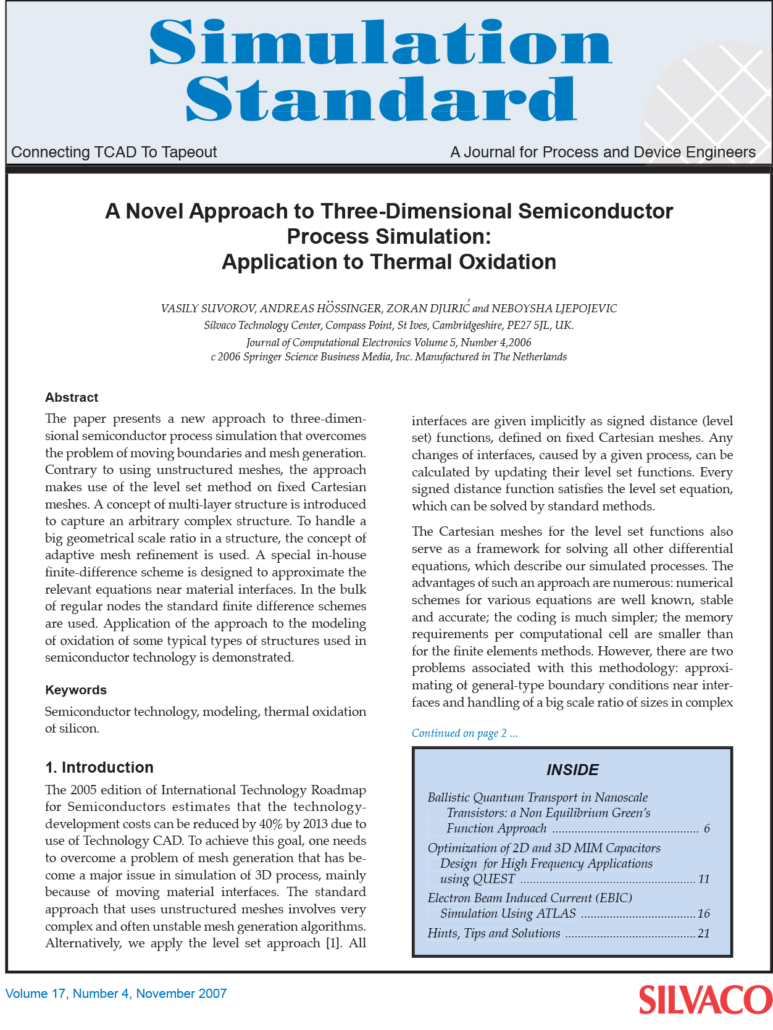
A Novel Approach to Three-Dimensional Semiconductor Process Simulation: Application to Thermal Oxidation
Abstract
The paper presents a new approach to three-dimensional semiconductor process simulation that overcomes the problem of moving boundaries and mesh generation. Contrary to using unstructured meshes, the approach makes use of the level set method on fixed Cartesian meshes. A concept of multi-layer structure is introduced to capture an arbitrary complex structure. To handle a big geometrical scale ratio in a structure, the concept of adaptive mesh refinement is used. A special in-house finite-difference scheme is designed to approximate the relevant equations near material interfaces. In the bulk of regular nodes the standard finite difference schemes are used. Application of the approach to the modeling of oxidation of some typical types of structures used in semiconductor technology is demonstrated.
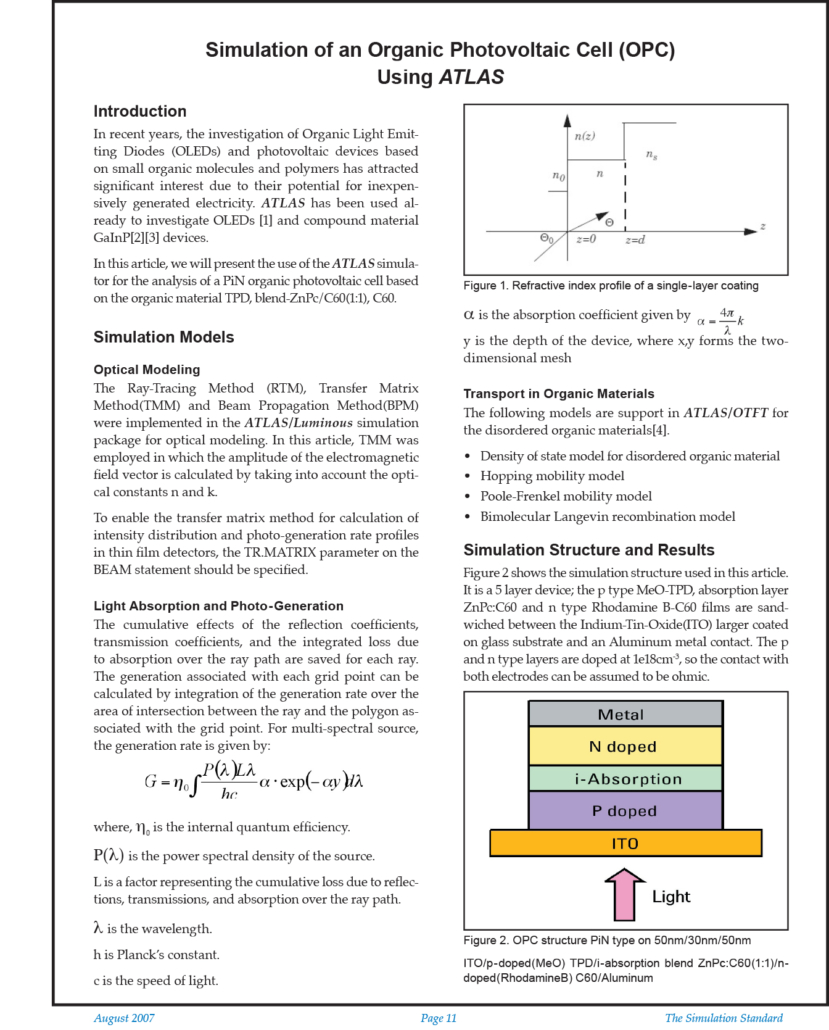
Simulation of an Organic Photovoltaic Cell (OPC) Using Atlas
Introduction
In recent years, the investigation of Organic Light Emitting Diodes (OLEDs) and photovoltaic devices based on small organic molecules and polymers has attracted significant interest due to their potential for inexpensively generated electricity. ATLAS has been used already to investigate OLEDs [1] and compound material GaInP[2][3] devices.

